SUMMARY
This is AI generated summarization, which may have errors. For context, always refer to the full article.
MANILA, Philippines – Three boys scrambled for an inflatable red ball in Paco, Manila.
The ball was just a few inches from their fingertips, floating in one of the many esteros that crisscross the district. One of them grabbed it from the water and victoriously held it above his head, jubilant to find a toy that would occupy them the whole day.
The ball was wet from the grayish green waters of the creek – a creek choked with plastic bags, slimy sludge, and floating black flakes of suspicious origin. A few steps away, a toilet hidden from view by blocks of cement and wooden planks drains directly into the same creek.
Most toilets in the area drain into this smelly creak beneath Zamora Bridge, said Clarence, one of the boys.
The lack of a “pozo negro” or underground container for manure and waste made this the cheapest and most convenient course of action for some Paco residents.
“Naghuhukay na lang po sila ng butas sa tabi ng estero (They just dig holes in the ground beside the creek),” said 13-year-old Annie Casignia, a Paco resident, describing the makeshift toilets of some of her neighbors.
Paco’s lack of a proper sewerage system is symptomatic of the greater malady afflicting the entire country.
More than 20 million Filipinos still have no access to proper sanitation and sewage facilities. Only 10% of the population is connected to sewerage systems, according to statistics from the Department of Environment and Natural Resources (DENR).
The problem refuses to stay underground. The country’s crappy sewerage leads to economic loss of more than P78 billion a year. The largest chunk of the loss, 71%, goes to health impacts due to poor sanitation, according to a 2008 study by World Bank. Pollution of water resources accounts for 23% of economic costs while other welfare impacts and damage of poor sanitation to the tourism industry are responsible for the rest of the loss.
According to the DENR, 55 people die daily from diseases caused by a lack of proper sewerage and sanitation facilities. These include leptospirosis, malaria, dengue, Hepatis A, Hepatitis E, and Typhoid fever.
A flood of problems
Annie and her neighbors are used to the rancid smell emanating from the creek, but she fears the dirty body of water the most during storms.
At the height of Tropical Storm Ondoy in 2009, the creek’s waters contributed to neck-high floods that drove residents to evacuate to higher ground. Annie and her brother had to swim through the flood waters.
Soon after, her brother contracted leptospirosis, a fatal infection transmitted when water contaminated with rat urine comes into contact with skin wounds and eyes.
Ondoy’s onslaught stopped and her brother got well, but the horrors weren’t over.
“Noong humupa na po, mag-iigib sana kami ng tubig eh napansin nila ang itim na ng tubig ta’s may mga buhangin-buhangin. So pinakuluan na lang namin ‘yung tubig. Nagkasakit sa tiyan ng mga bata. Nagtae po ‘yung mga bata,” she recalled.
(When the flood waters subsided, we pumped water from the ground. We noticed that the water was black and had what looked like sand in it. So we just boiled the water. The kids started to get stomach aches. They started to defecate uncontrollably.)
Diseases and ailments caused by dirty water can be prevented by keeping well-maintained sewage facilities that stop wastewater from flowing into bodies of water like rivers, creeks, and lakes – which are almost always likely to happen during storms.
Residents of Barangay 826, one of the communities living beside the creek under Zamora Bridge, have long asked for a septic tank from their barangay officials. Inaction by the local government forced the residents to put together a makeshift sewerage system.
Antonio Repis, a resident since 1969, made his own underground pipeline and septic tank right beside the creek.
“Kaso pag hindi na kaya ng tanke, pumupunta sa estero ‘yung dumi (But when the tank can’t handle all the waste, the waste overflows to the creek),” he said.
Septic tanks, containers that store waste and decompose them through bacterial action, are supposed to be emptied regularly. The DENR estimates that half of the country’s septic tanks have not been emptied for the past 5 years, if at all.
A 2009 study by the Asian Development Bank showed that unsanitary septic tanks contribute to 58% of the country’s contaminated groundwater. The contamination has “killed” major bodies of water. Rivers are unable to sustain aquatic life, beaches are too dirty for swimming, waterborne diseases infect more people, and fishermen are forced to venture farther out to sea for a decent catch of fish.
Estero cleanups are not enough to purify their creek’s foulness, said Repis. To begin with, the cleanups are few and far between.
“Bihira lang sila naglilinis, kapag halalan, kapag inuutos ng Presidente (They seldom clean, only when there are elections or upon the order of the President).”
He blames the “squatters” upstream for the creek’s defilement. The creek that used to be full of waterlilies is swimming in garbage because of the lack of discipline of Filipinos, he complained.
Solution in sight
By 2020, Paco’s sewage problem should be solved – at least, as promised by a program recently launched by the DENR.
The National Sewerage and Septage Management Program (NSSMP) seeks to provide the entire country with proper sewerage and septage systems by 2020. It aims to achieve this by investing in infrastructure like sewage pipelines and wastewater treatment facilities – structures that remove biological or chemical waste from water, allowing the treated water to be used for other purposes.
The program will also improve the capability of local government units to build, operate, and maintain the facilities.
The NSSMP just wrapped up its initial phase, involving consultation between representatives of LGUs and water districts from the cities enrolled in the program.
The next phase would be the actual implementation of the program, installing sewerage and septage systems within the areas.
Last March, a Program Operations Manual crafted by the Department of Public Works and Highways (DPWH) was released to guide LGUs on how to develop and maintain their sewerage and septage systems.
The NSSMP also identifies cities to be especially targeted by the initiative. Referred to as highly urbanized cities or HUCs, these areas suffer the most from bad sewerage due to overpopulation, pollution, and unchecked commercial developments.
Included in the list are the cities of Baguio, Cebu, Angeles, Tacloban, San Pablo, General Santos, and Zamboanga.
As HUCs, they are set to receive funding from DPWH to cover 40% of capital costs for the cities’ sewerage projects.
The ultimate goal is to connect all subdivisions, condominiums, commercial establishments, hotels, hospitals, public markets and government buildings to the sewerage system.
“Unfortunately, as of 2010, only 30% of these areas had sewer coverage due to limitations in the sewerage network itself,” said DENR Secretary Ramon Paje.
“However, we are making resolute and palpable progress, and we hope to achieve 100% sewer coverage by 2018, provided we make the right investments.”
There are already small but noteworthy steps in the right direction.
A joint sewage-septage treatment plant in Veterans Village in Project 7, Quezon City, can treat 2,400 cubic meters of sewage generated daily by residents. On top of that, it can treat 240 cubic meters of sewage from nearby areas.
A low-cost, small-scale wastewater treatment facility installed by the Muntinlupa City government cleans 210 cubic meters a day. The treated water is then recycled for cleaning and flushing water for toilets.
Back in Manila’s Barangay 826, Repis was happy to hear about the government’s plans. His only worry was that good old laziness and lack of discipline would get in the way.
“Nasanay na kasi ang mga tao dito. Mas madali kasi yung ginagawa nila ngayon. (The people here are so used to status quo. The way things are being done now is easier).”
As for the 3 boys with the red ball, a hope remains that, one day, toys picked up from a creek would be nothing to worry about. – Rappler.com
Add a comment
How does this make you feel?
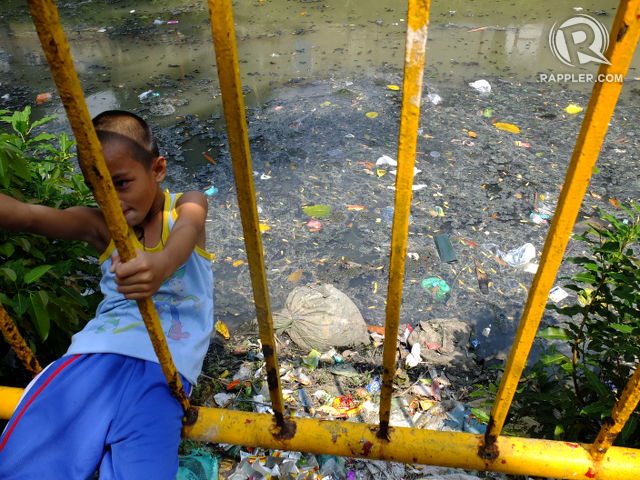
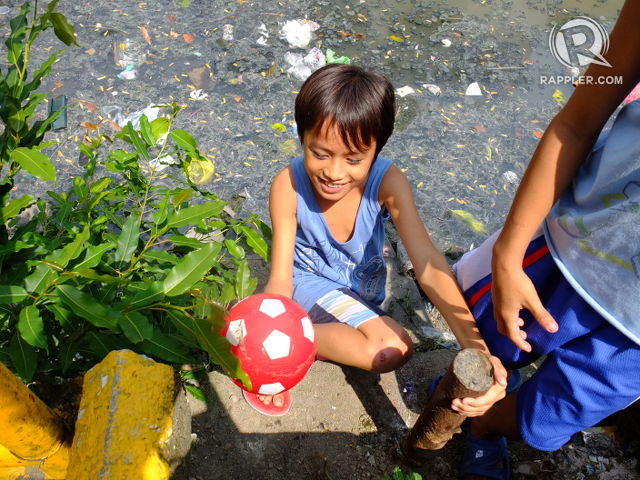

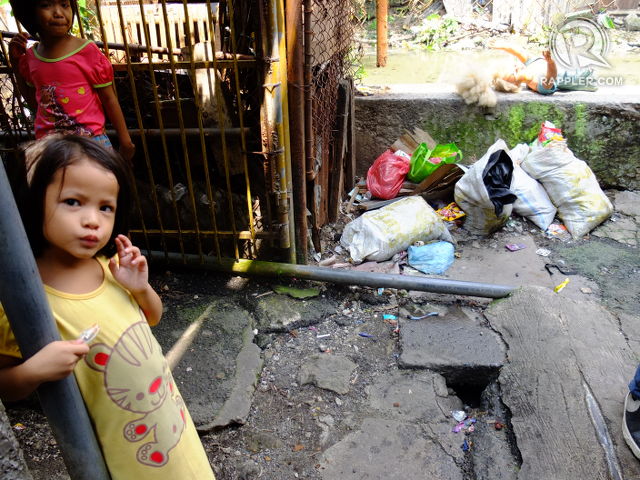
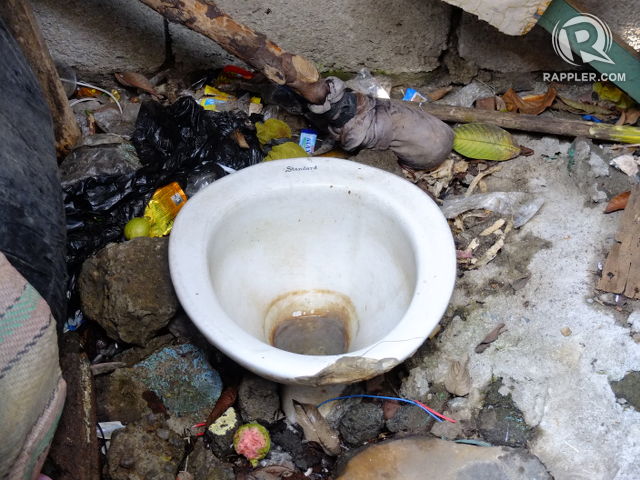
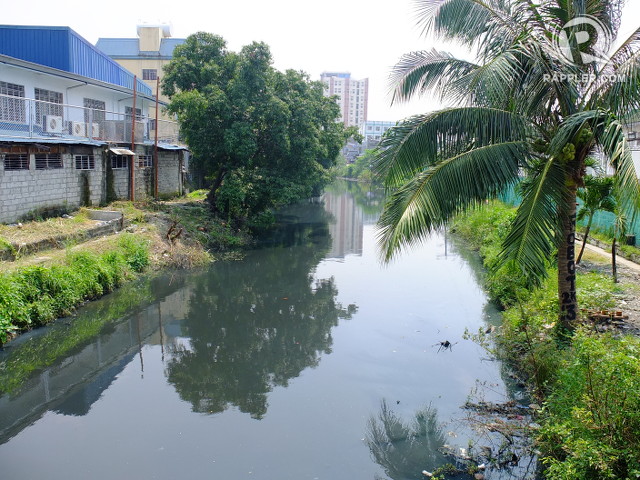
There are no comments yet. Add your comment to start the conversation.